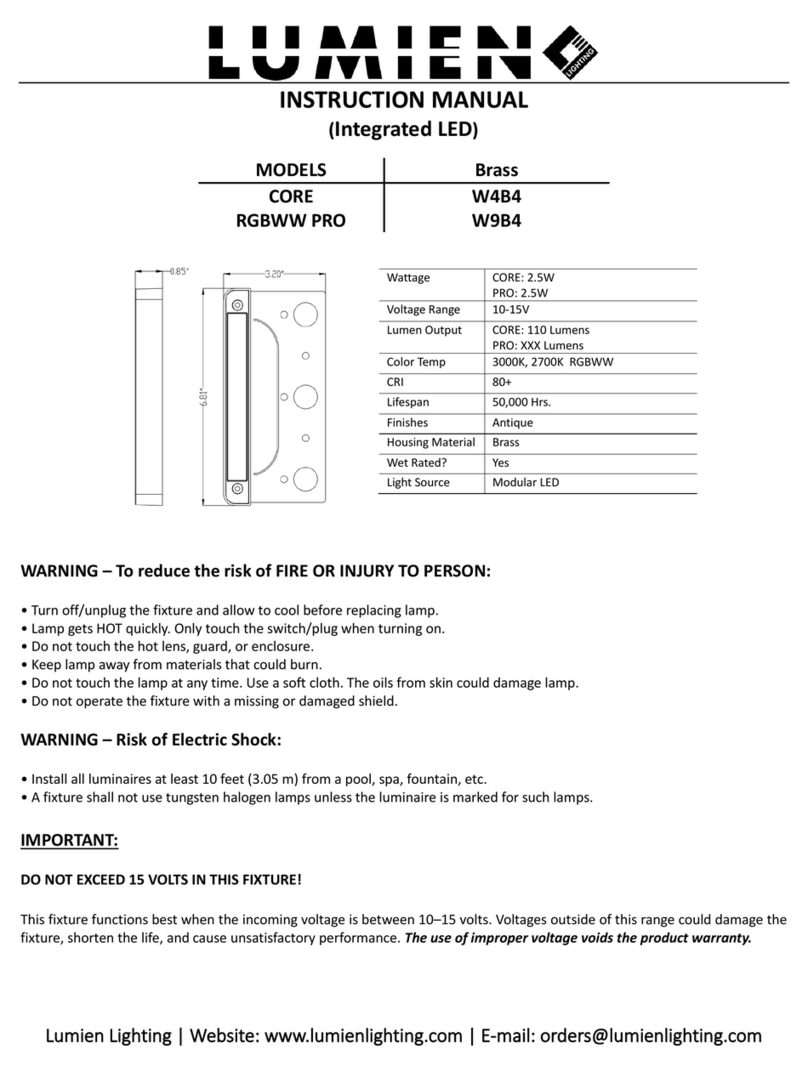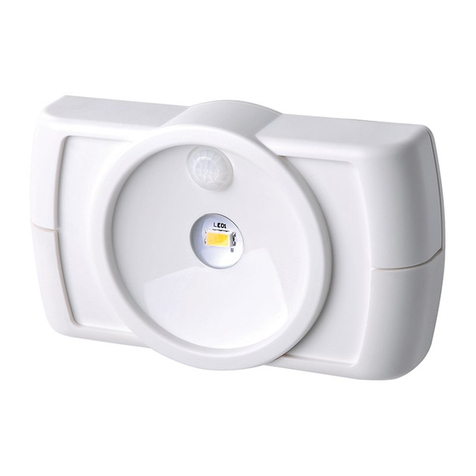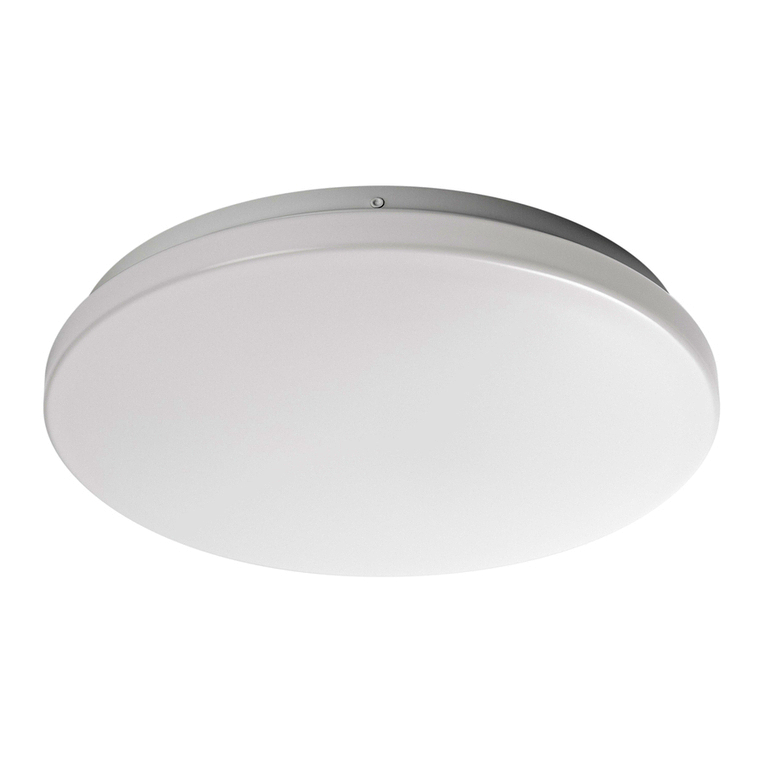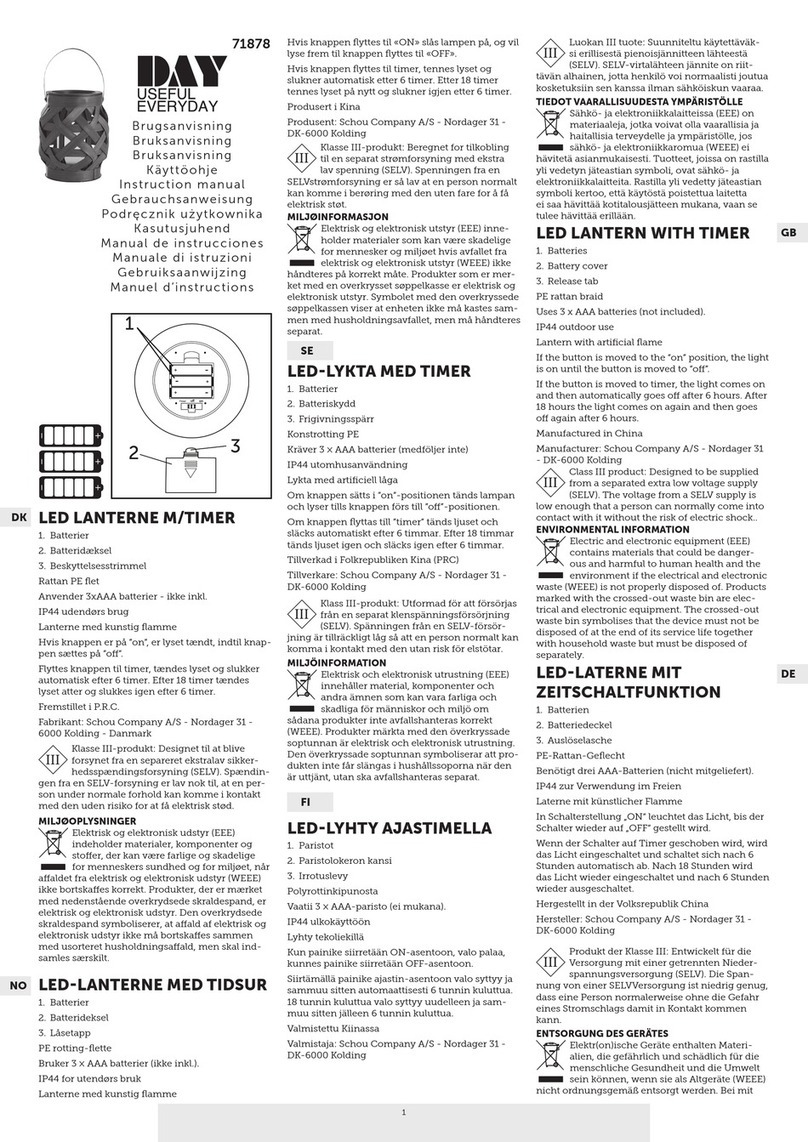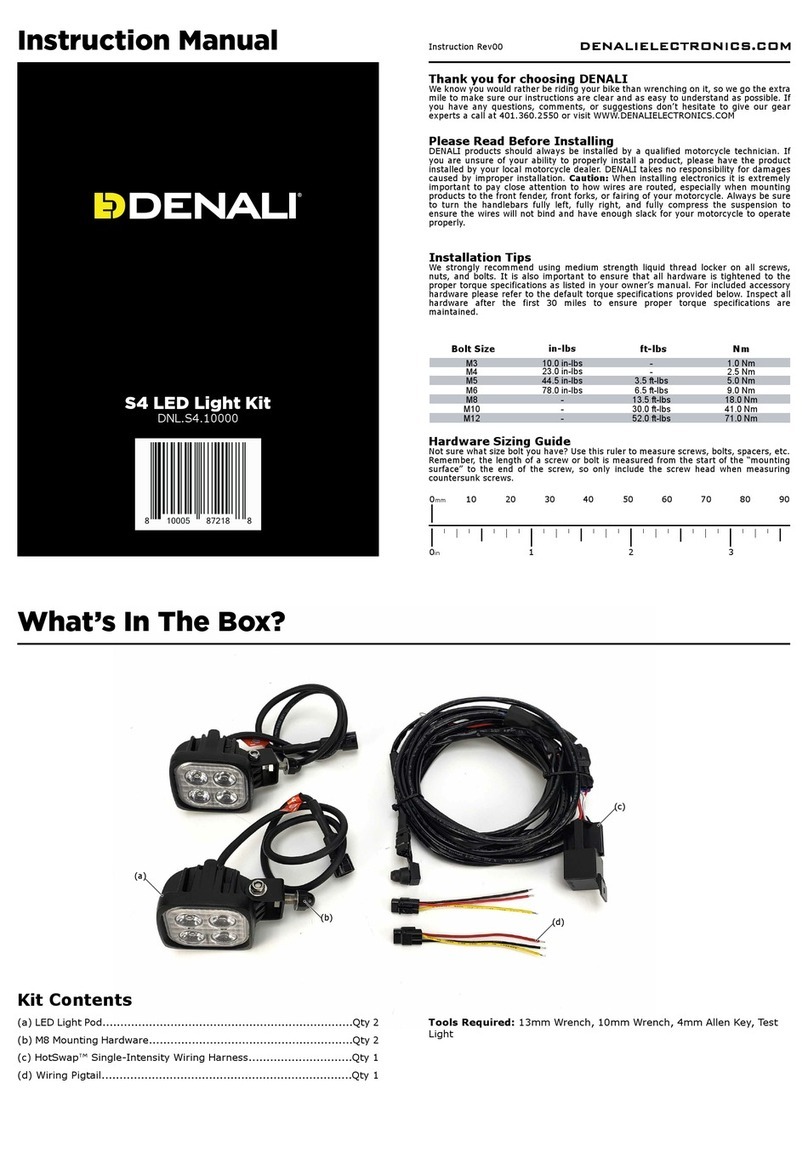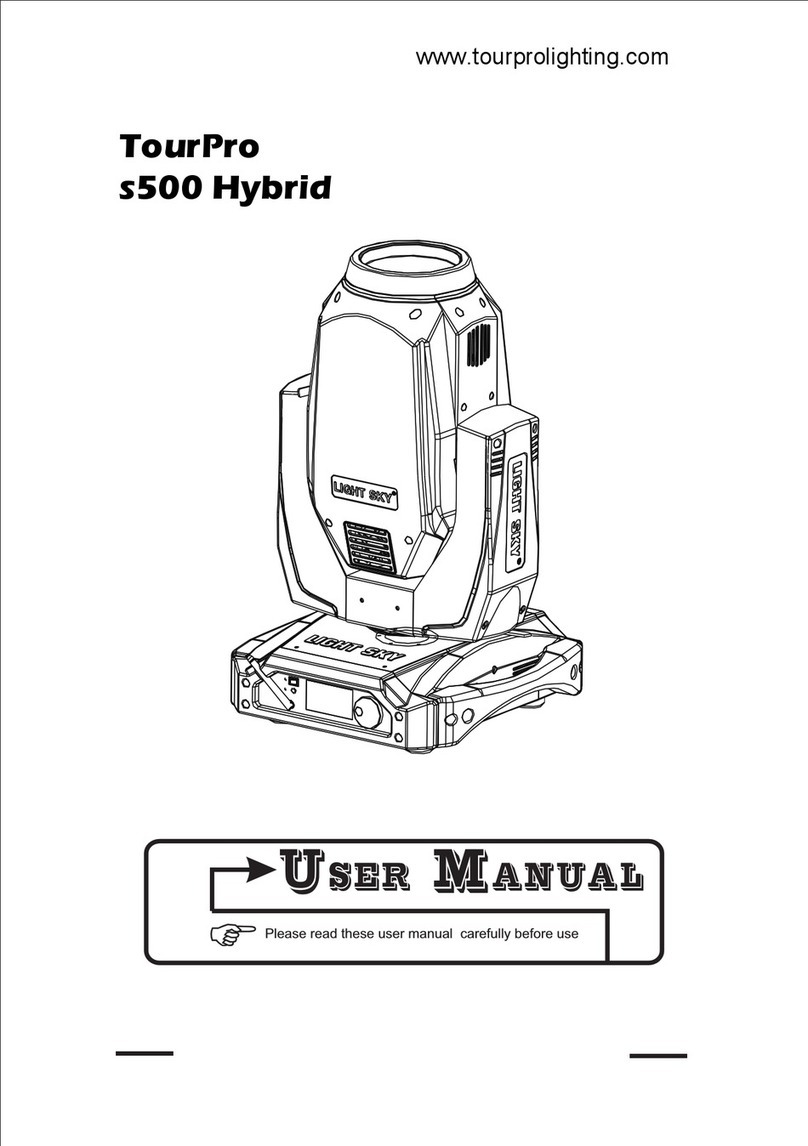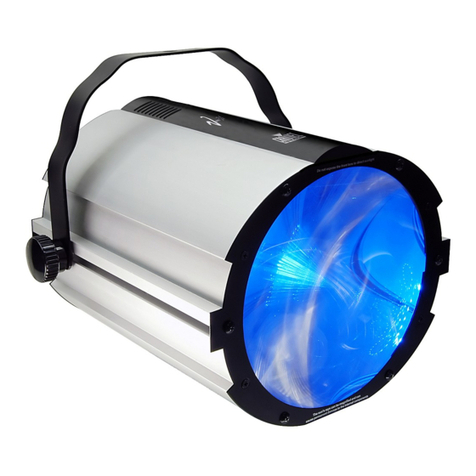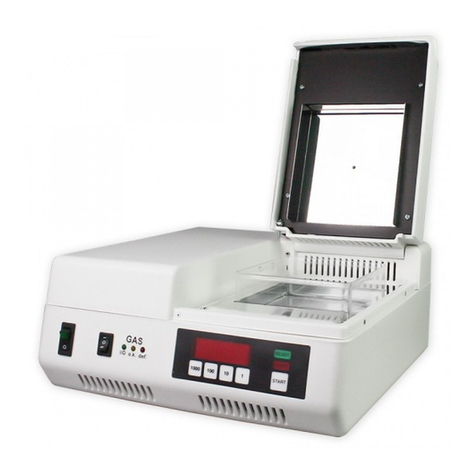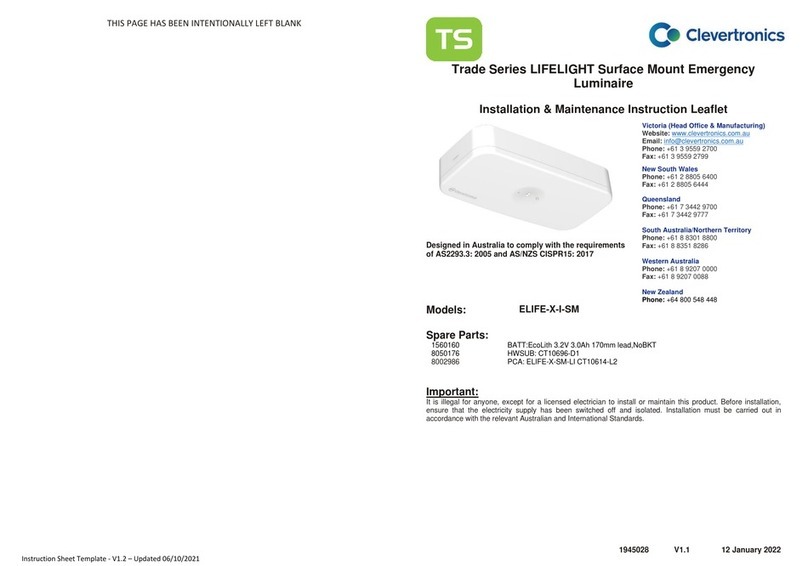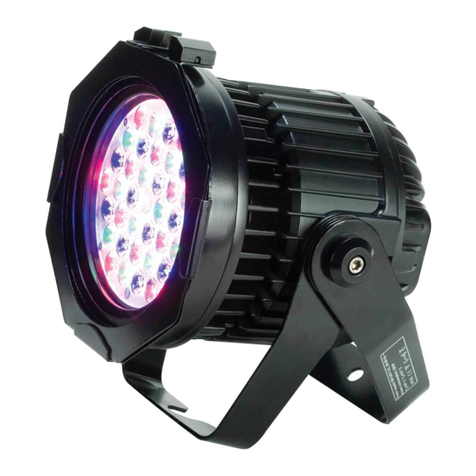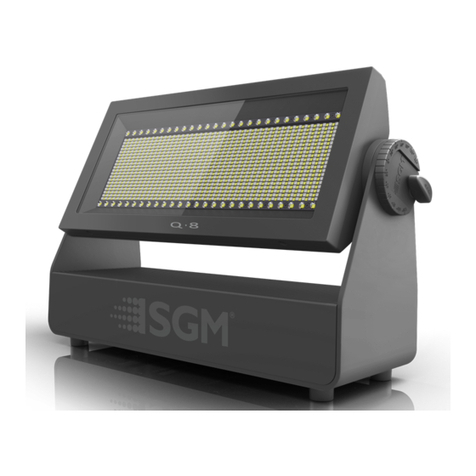Harmopool Hydrolyse EC20 User manual


2
Assembled by:
Swimming pool BVBA
Industrial Road 9
3190 Boortmeerbeek
Belgium
www.harmopool.eu
Contents
Contents...................................................................................................................................2
Incharge
..................................................................................................................................3
Specifications...........................................................................................................................4
Installation...............................................................................................................................4
Installation items .................................................................................................................4
Installation of the water treatment plate ...........................................................................6
Set the parameters of the control unit
................................................................................8
Chlorine control via Rx: set up the Rx set point ....................................................................14
Table 1 ...............................................................................................................................14
Specification of Ph addition...................................................................................................16
Calibration and verification Chlorine /Ph ..............................................................................16
Connecting a flow switch...................................................................................................16
Connecting a level switch ..................................................................................................17
Overview chlorinator.............................................................................................................17
Installation instructions.........................................................................................................19
The use of the chlorinator .....................................................................................................20
Error codes and corresponding chlorinator solutions...........................................................22
Extra : operational use and maintenance of the chlorinator specification...........................23
Maintenance of the peristaltic pump................................................................................26
Warnings............................................................................................................................26
Problem solution for the small steering box.....................................................................27

3
Incharge
This manual contains all necessary information for installation, troubleshooting and
maintenance. Read the manual thoroughly before opening or using the unit. The
manufacturer of this product will not be held responsible for any injury and/or damage to
the product, if that is the result of improper installation or unnecessary/intended
maintenance. It is essential that you always follow the instructions in this manual.
Installation by qualified personnel is required.
•Only a qualified installer, center, person, or authorized dealer can repair this
product.
•Maintenance and servicing should be performed at the recommended time and
frequency, as indicated in this manual.
•Use only original standard parts. Failure to do so will void your warranty.
Characteristics
•Durable: the materials used are chlorine, acid (sulfuric) and base resistant. They
can withstand prolonged exposure to swimming pool water (even with salt for salt
electrolysis). The dosing devices are not suitable for use with hydrochloric acid (HCl)
•Simple operation: the unit is very convenient to operate. Turn it on and set the
desired pH (acid) or redox value (Chlorine).
•Low cost: the operational cost is very low because the pool water never turns green
when used correctly.
Important elements :
•Incomplete grounding of the elements can have negative consequences on the
measurement results and lead to less good pool water.
•Separate earthing with separate earthing pin for pump, electrolysis is
recommended.
•Correct and proper grounding can avoid many problems.
•Only use city water, preferably no rainwater or well water.

4
Specifications
ZBSXxxxx ZBSXxxxxxx ZBSXXxxxxP
50 m3 75m3 120m3
pH Control
Chlorine regulation
ZWMX2155
Peristaltic pump
Swimming pool
connection
EC 20 20g/h
Flow switch safety
50mm rubber
Dimension plate
(2x)
38 x 48 cm
Display card
Harmo pool ref ZWMX7010
Relay map
Harmo pool ref ZWMX7011
Installation
Installation items
The factory provides the plate with water treatment equipment without a plug for the
devices. Dit device is elektrisch connected to the salt electrolysis device.
Attention!
○The electrical installation shall be carried out in such a way that:
-The salt electrolysis and acid pump cannot work if the filter pump does not work.
-The salt electrolysis and acid pump can be switched off if the filter pump is working.
-Switching off can always be done with the small on/off buttons on the devices
○Adding the chemicals for the pool should be done downstream from the pool
accessories such as heating, UV lamp, filter etc.

5
○It is recommended to put the installation of the water treatment unit in bypass
configuration.
○Install the water treatment unit on a solid basis.
○Always keep the product upright. If the product is tilted or laid on the side, the
electrodes cannot measure correctly.
○The product must be installed inside. If you want to do this outdoors, you need to
contact your, supplier.
○The dosing device mag shall not be used with hydrochloric acid (HCl)..
○The electronics (dosing devices) of the appliance must be installed inside. Make sure that
- in case of leak - the water cannot run over the installation.
○Make sure that the acid container is placed OUTSIDE or in a verywell-fertilizedspace.
○Calibrate the pH and Rx electrodes for the first use and then "regular". (At least every
3months).

6
Installation of the water treatment plate
1. Attach the water treatment unit to a solid wall. Fix both the lower and upper part
of the plate.
2. Insert pH and chlorine electrodes into the electrode holders. Fix the nut with pliers
or wrench to tighten the cap. Failure to do so may result in a leak and is not
covered under warranty.
3Create a separate grounding for your Salt Electrolysis with grounding pen.
4Connect water inlaat and water outlet, so that the water passes the Redox and pH
measuring electrode first and then along the salt electrolysis (or vice versa)..
The preference is for a bypass configuration installation:

7
5Make the electrical connections in such a way that:
-The salt electrolysis and acid pump cannot work if the filter pump does not work.
-The salt electrolysis and acid pump can be switched off if the filter pump is working.
6Connect the pH and redox measuring heads to the BNC connection to the positions
provided for this purpose:
pH (left) RX (right)
7Start filterpomp.
8Verify that the installation does not leak.
9Stop the filter pump. Remove the elektrodes from the holder and kalibreer pH and redox
electrodes..
Attention!!
(1) If you do not have a bypass configuration, insert two rubber caps (product code:
ZFPX4640) into the electrode bases to prevent water from spraying out of the
electrode bases during calibration.
(2) The electrode calibration procedure may take several minutes. To ensure an
accurate reading, it is important to follow the steps below.
(3) If you do not have a bypass configuration, insert two rubber caps (product code:
ZFPX4640) into the electrode bases to prevent water from spraying from the
electrode bases during calibration.
(4) The electrode calibration procedure may take several minutes. To ensure an
accurate reading, it is important to follow the steps below.
(5) Make sure that the calibration fluids used in the calibration process always match
the values indicated and that the fluids are not contaminated.
Zoutelectrolyse
filter pump
safety fuse with timer

8
Set the parameters of the control unit
9Calibrate the electrodes
The following steps, you have calibrated the electrodes in no time:
1. Immerse the probes in the calibration fluids for pH (pH 7) and Redox (465-468 mV)
and wait 5 minutes to balance before proceeding with the calibration process.
2. Press the pH and Redox key for 10 seconds (upper and lower key)
As soon as the calibration starts, a screen is activated and shows what you are
calibrating, you can either only calibrate Ph ef only Rx or both at the same time
A timer will stop after 120 seconds and give a notification as to whether the
calibration has succeeded.
Reasons for a failed calibration:
A bad calibration ( recalibrate)
Calibration fluid is contaminated (replace fluid) recalibrate
Measuring probe is broken (too long DRY DRAY) (replace measuring probe) and
recalibrate. Attention : pH probe broken pH value on screen =7
In the case of an unsuccessful
calibration, Hge is the next
notification
wait a moment 033
wait a moment 111
wait a moment
022
wait a moment
022
wait a moment 10
wait a moment 10
Failed, refer to
manual. Press OK
wait a moment
00

9
With a good calibration of Ph and Rx, the screens disappear automatically. After 2
minutes the screens will disappear and you can read the values from the screen. If
the calibration is correct, the values are as follows:
a. pH 7.0 +- 0,1
b. Redox 468 +-10mV
If the values are not within the range as described above, you can press the pH and
Redox keys again to repeat the calibration process.
10 Preparation of the pool water
Make sure that the pH of the pool water is at least between 7.2 and. 8.5 and as close as
possible to 7.4. Make sure that the chlorstabilisator (cyanic acid) content in the pool water
is between 20-40 ppm (20-40 g / 10 m³)
11 Set parameters
Several parameters need to be set. Press the middle key. You will see the following screen:
11.1))Language
You can set a (different) language. Press the middle key again. Then navigate
through the upper or lower key to the languages Français, Castellano, Italiano,
English, Deutsch. You confirm your choice of language by pressing the middle key.
11.2) Dosing mode: proportional continuous ( not for salt electrolysis) Salt time, Salt
Rx(for) salt electrolysis
Press the lower key. The setting "dosing method" is now ticked. Press the middle key to
activate this setting. You can now see that the dosing mode Prop (= proportional) or Cont
(continuous) is selected. Press the middle key again. In the salt electrolysis dosing mode
you can choose between Salt time or Salt Rx.

10
Attention!
With salt electrolysis you may not use the dosing modes Continuous and Proportional.
Explanation of the dosing method Proportional
With the "Proportional" dosing method, the controller runs continuously through a cycle:
-pH and chlorine content are measured and stored for 40 seconds (no dosing
at this moment)
-The chlorine (if necessary) is dosed for 2 minutes
-The pH-min (if necessary) is dosed for 2 minutes
The closer the pH value approaches the set value, the less the pump will run.
This dosing method (prop) is recommended for working with liquid chlorine and liquid pH
With this dosing method, pH and liquid chlorine are never dosed at the same time.
Explanation of the continuous dosing method:
-The pumps always run when the pH and/or redox setpoint is not reached.
-If you choose this dosing method, the injection point for pH and chlorine must be at
least 2 meters apart. The measurement must be carried out prior to injection.
Explanation of the dosing method salt time:
Explanation of the dosing method Salt (electrolysis) :
Option 1: Salt time
Here one can set a time in hours and minutes with a
maximum of: 23 hours and 59 minutes.
This means that the unit will only function on a time
basis for the creation of chlorine, so the measured
value of Rx will not be taken into account, even if the
Rx setpoint is reached, chlorine will continue to be
created on a time basis.

11
When the voltage drops or a flow interruption occurs, the timer will be reset and its time
will be completely expired again.
This procedure runs if the set time. After the time has elapsed, the pH dosage and
measurement will continue, but no more chlorine will be generated. At the next 24 hours
the timer resumes its settings or set time.
When confirming and after setting the option Salt time a screen appears with the message:
After each power or flow interruption, the electrolysis will operate for xx
hours and xx minutes (your set time values). With continuous electrical
current, the electrolysis will operate for xx hours and xx minutes per 24
hours.
After each power or flow interruption, the electrolysis will operate for xx hours and xx
minutes (your set time values). With continuous electrical current, the electrolysis will
operate for xx hours and xx minutes per 24 hours.
Press OK to return.
Option 2: Salt Rx
after the selection comes a notification screen
- The sequence is:
Measurement values swimming pool water 40 sec
Chlorine generation by electrolysis 4 min
pH dosage 1 min (if setpoint is not reached)
Back measurement values swimming pool water
When the setpoint Rx is reached the sequence will continue to run but no more chlorine
will be generated, chlorine will be generated again when the measured Rx value has
dropped below the setpoint Rx.

12
-The unit will measure Ph and Rx (redox) for 40 seconds. This measurement will be stored
in memory.
If PH is set to -:
If the Ph value is much higher than the setpoint (target value), the Ph dosing pump runs for
2 min.
If the Ph value is lower than the setpoint (target value), the dosing pump does not run.
If the Rx value is lower than the setpoint, the electrolysis cell produces 4 min of chlorine.
After 6 minutes salt electrolysis and pH dosing will stop, and pH and Redox will be
measured again. The above cycle repeats.
11.3) PH+ or PH-
Press the lower key. The setting "PH+ or PH-" is now checked. Press
the center key to activate this setting. A - sign appears. Press the
center key again. You have now set the supply of PH-.
PH- must always be set when using liquid chlorine. Liquid chlorine
already contains PH+. It is always added as a stabilizer.
PH- must always be set when using salt electrolysis. When chlorine is
produced by the salt electrolysis unit, PH+ (NaOH) is formed as a by-product.
It is not possible to add both PH+ and PH: PH or PH+, never both at the same time.
11.4) PH SP (Set Point)
Press the lower key. The setting "PH SP" is now checked. Press the center key to
activate this setting. You will now see the preset value. Now you can set the
value higher or lower with the upper or lower key after which you confirm by
pressing the middle key. The value is now set according to your needs.
As a rule, the pH will be controlled at 7.4
As a rule, the pH will be regulated at 7.4
11.5) Rx SP (Redox Setpoint)
The redox is a measure of the chlorine content.
At start-up we recommend setting the setpoint to 700mV, in the same way as
described above for pH. After the first start-up measure the chlorine content with
a colour method. If necessary, adjust the setpoint for redox (decrease if chlorine is
too high, increase if chlorine is too low).

13
11.6) Flow switch; no, yes
Here you can enter if the installation is equipped with a Flow switch.
If you enter YES, the unit assumes that a flow switch is active. In case of a water flow a
contact will close. When the contact is closed, the dosing pumps Ph and salt electrolysis
can function, when there is no flow, the contact is open and so the dosing pump and salt
electrolysis will not function or will stop at a flow stop.
11.7) Safety alarm: on or off or info
The alarm function is required to ensure safe use of this device and pool.
Alarm on:
The alarm screen rises to one:
-pH too high ( pH>8.5 or pH too low ( pH < 5.5)
-Redox too high(>xx)
-pH or Redox measurement =0
-uninterrupted dosing for 240 min
The alarm message disappears after the middle menu button is pressed. From then on, one
can manually or automatically bring the values to their level by adding the appropriate
products and mode.
After the set time of the alarm has elapsed and the values are not yet ok then the
alarm will come back into effect.
With an uninterrupted dosage for 240 min or 4 hours, the device goes into alarm
mode and stops the functionality of the dosing pumps and electrolysis.
Alarm off:
Never use the device in the alarm OFF mode during normal and automatic operation. The
alarm OFF mode is used only to monitor your device in the event of a malfunction. If you
turn the alarm off, the alarm will not work for 60 minutes.
Suction cap of pH in the acid can. It is recommended not to lower the suction cap to the
bottom of the canister. If something would go wrong with the dosage, the whole can of
acid will not be pumped into the pool.
12) How much salt should there be in the pool?
Although the equipment starts to work with a smaller salt percentage, it achieves optimum
salt concentrations of 3.5kg/m3. We recommend a concentration of 3.5kg / m3 to
compensate for small losses of salt that occur when cleaning the filter, the effect of
rainfall, etc. To calculate the salt to be added, multiply the total volume in m3 of your
swimming pool x3,5
Example: A swimming pool with the following dimensions: Length 9m ; 4.5m in width and
1.6m in depth
9 x 4.5 x 1.6 = 64.8 cubic meters. 64.8 x 3.5 = 226.8 kg salt to be added

14
13) Build in suction nipple
Insert the Ph suction cap into the acid canister. It is recommended not to lower the suction
cap to the bottom of the canister. If something would go wrong with the dosage, the
whole can of acid will not be pumped into the pool.
14) Start installation
Start the installation by switching on the electricity of the pump until the salt is dissolved
and evenly distributed in the pool water.
Verify the pH and adjust the pH to 7.2-7.4.
15) Start salt electrolysis and pH dosage.
Chlorine control via Rx: set up the Rx set point
The Rx (redox) is a measure of the chlorine content (oxidation capacity) of the pool water.
The higher the Rx, the higher the chlorine content.
Regularly check the functioning of the electrodes and settings by measuring pH and
chlorine content using an alternative method (color measurement e.g. Poollab
ZWMX1060). If necessary, adjust or calibrate the setpoints of the installation.
The measurement of the chlorine content is expressed on the device in mV.
Many other devices express the chlorine content in ppm.
Below is a table which shows the ratios between mV and pH and the corresponding ppm.
For example, your device has the following values on the screen: pH 7.2 and redox of 740
then your pool water has a chlorine content of 1.2 ppm.
Attention, the measured values can sometimes deviate during a certain period of time,
these changes are determined by external uncontrollable factors, when in doubt do
different measurements at different times and interpret the values correctly
Table 1
Below is a table showing the ratios between mV, pH and the corresponding chlorine
content in ppm. For example, your device has the following values on the screen: pH 7,2
and redox of 740 then your pool water has a chlorine content of 1,2 ppm.
Attention, this table is not always correct. Due to products such as flocculants, wall
cleaner, settling agents, sulphates, copper sulphate, extremely dirty water (chloramines) ...
, due to electromagnetic interference and/or a non-ideal grounding, an Rx of 700-750 mV
may NOT correspond to a chlorine content of 1-1.5ppm. Often this is a temporary
phenomenon that occurs mainly when salt electrolysis is used.
A colour measurement with a solid device (e.g. Pool lab ZWMX1060), gives the best
indication of the chlorine content in the pool.

15
Free Chlorine ORP/mV vs pH
ORP/Mv
pH
6,9
7
7,2
7,3
7,4
7,5
7,6
7,7
7,8
7,9
8
8,1
8,2
ppm
mV
507
505
502
500
499
497
496
494
493
491
490
488
487
0,2
mV
561
558
553
550
548
546
544
541
539
536
534
532
529
0,3
mV
599
596
590
586
583
580
577
574
571
568
565
562
559
0,4
mV
629
625
618
615
611
607
604
600
597
593
590
586
583
0,5
mV
652
648
640
637
632
629
625
621
617
613
610
605
602
0,6
mV
663
658
650
646
642
638
634
630
626
622
618
614
610
0,65
mV
673
669
660
656
651
647
643
639
635
630
626
622
618
0,67
mV
682
677
668
664
660
663
651
647
642
638
634
629
625
0,75
mV
690
686
677
672
668
655
659
654
650
645
641
636
632
0,8
mV
698
694
684
680
675
670
666
661
657
652
647
643
638
0,95
mV
706
702
692
687
682
677
673
668
663
658
654
649
644
0,9
mV
713
708
698
694
689
684
679
674
669
664
659
654
650
0,95
mV
720
715
705
700
695
690
685
680
675
670
665
660
655
1
mV
733
727
717
712
707
701
696
691
686
680
675
670
665
1,1
mV
744
739
728
722
717
712
706
701
695
690
685
679
674
1,2
mV
755
749
738
732
727
721
716
710
705
699
694
688
682
1,3
mV
765
759
747
742
736
730
724
719
713
707
702
696
690
1,4
mV
774
768
756
750
744
738
732
727
721
715
709
703
697
1,5
mV
790
784
771
765
759
753
747
741
735
728
722
716
710
1,7
mV
798
792
779
773
766
760
754
748
741
735
729
722
716
1,8
mV
812
805
792
785
779
773
766
760
753
747
740
734
727
2
mV
824
818
804
797
731
784
777
771
764
757
751
744
737
2,2
mV
841
834
826
813
806
800
792
785
778
771
764
757
751
2,5

16
Specification of Ph addition
The pH value is corrected with pH min. We recommend the use of 15% -30% sulfuric acid,
the weaker the sulfuric acid and how accurate the pH dosage will work.
In the exceptional case that the pH drops below 7.2, it is best to bring it back to zone 7.2-
7.6 by adding pH plus.
As an additional safety measure, we recommend that you do not lower the suction cup to
the bottom of the canister. If something would go wrong with the dosage, the whole can
will not be pumped acid into the pool.
Calibration and verification Chlorine /Ph
The correctness of pH and Chlorine must be regularly (weekly) verified by means of a
proper measurement with color (for example Poollab ZWMX1060.
Every installation should be calibrated at least once a year. In case of a long swimming
season, or in case of deviation between color method measurement and pH/Rx values, it is
advisable to also calibrate half-yearly, i.e. twice a year.
The procedure for calibrating and adjusting the setpoint has already been described in
detail above.
Connecting a flow switch
A flow switch can be added to the unit, for units produced in 2020 or later.
On the circuit board with the display, there is the connection "FS" at the bottom left. These
are connected to the two contacts of the flow switch. If no flow is detected, neither acid
nor chlorine pump will run, and an alarm will be generated.

17
Connecting a level switch
Two level switches can be added to the unit, for devices produced in 2020 or later.
On the circuit board with the display, the "WLH" and "WLL" connections are located at the
bottom center and right. These are connected to the two contacts of the level switch.
Connect connection WLH to the level switch in the acid drum, and the connection WLL to
the level switch in the chlorine drum.
At low level detection, the corresponding pump will stop pumping and generate an alarm.
Overview chlorinator
The Salt Chlorinator uses the most advanced microcomputer technology. It is both multi-
functional and easy to operate. It includes functions such as automatic reset (self-cleaning,
limescale remover) and fault alarm.
It includes functions such as automatic reset National (self-cleaning, limescale removal)
and fault alarm. You can adjust the chlorine concentration according to your needs, to
achieve the goal of efficiency and environmental friendliness.
Product differentiating facts:
Controller and chlorinator are integrated for a simple and space-saving application.
Water inlet and outlet are designed on the same axis to reduce the need for pipe
positioning.
Design for easy access to the titanium polar plate during installation and maintenance
Users can choose from different levels of chlorine production. One can adjust the level to
the needs of the pool, which is energy efficient and environmentally friendly.
The chlorinator contains a salt meter and alarms in case of malfunction.
The chlorinator contains water temperature protection (10 ° to 40 ° ). This can significantly
increase the service life of the device.
There is a water level detection. The chlorinator will only function if water is effectively
detected.
When turned on, the unit will take over the last observed settings.

18
Auto power on means a power failure occurs during operation and when power is
restored, the system automatically turns on. Remembering the last operation setting
means the state before a power failure, or the system setting before a system failure,
including the acceleration status, the acceleration status timer is reset.
Model
Chlorine
production
Ideal business location
EC8
8g/h
unit suitable for swimming pools = 40 m³
EC12
12g/h
unit suitable for swimming pools = 60 m³
EC16.
16g/h
unit suitable for swimming pools = 80 m³
EC20
20g/h=
unit suitable for swimming pools = 100 m³
Product Specification Diagram
Structure diagram

19
Installation instructions
1. Make sure that the pipe used for the installation is the same size as the salt
chlorinator. The nominal diameter of the chlorinator's connecting pipe is: 1.5" or 50
mm.
2. Make sure the tap for the chlorinator is closed before use.
3. Before installation, clean the pipes and the connection seam
4. The salt chlorinator must be installed with the return line to the pool and through
the water treatment line as shown in the diagram. A control valve must be installed on
the main pipe (as shown in diagram 1 or diagram 2).
5. Before installing the salt chlorinator, make sure that the water flow corresponds to
the direction indicated by the chlorinator.
6. When connecting the pipes, use only line suitable for bonding PVC
7. The chlorinator uses the external power adapter, input (AC110-220V/50Hz-60Hz),
output 18V 4A.
8. The external power adapter of the chlorinator must be connected to a power source
that has a 30mA earth leakage switch.
9. The chlorinator should be installed in a well-ventilated room to ensure proper
cooling.
Do not install in an area where moisture or rain may damage the electronic
components of the chlorinator.
During use, the chlorinator should avoid direct sunlight to prevent the aging process of
the enclosure.

20
The use of the chlorinator
1. When the chlorinator is connected to the faucet, adjust the water flow with the
valve to ensure there is enough water through the salt chlorinator.
2. To connect the power cord, open the decorative cover of the chlorinator in the
direction indicated by the arrow on the cover. Insert the round plug into the power
adapter (as shown in Figure 3), then replace the decorative cover to its original
position.
3. Make sure the salt concentration of the pool water is within the normal operating
range, otherwise it may shorten the life of the Titanium cell.
4. Close the loss current unit switch to activate the display. The display will show the
current water temperature. Press the Power / Operate button, the operating light
will change from red to green and the chlorinator will start working: Note: the
chlorinator can only operate if the water level detector detects the presence of
sufficient water flow.
5. When connecting the pipes, use only line suitable for gluing PVC
6. By pressing the "+" or "-" button, users can adjust the chlorine concentration level
as needed; users can use level 1-5, 1 level is the smallest and 5 level is the highest.
The higher the level, the higher the concentration of chlorine is produced.
7. Parameter control: press the acceleration button several times while the
chlorinator is turned off to look up different parameters below:
1Internal temperature chlorinator
2Water temperature
3Input voltage
4Version number
5Time period of continuous operation; the system leaves the application
automatically after 3 seconds
8. Time setting for continuous operation: Press the acceleration button 5 times while the
machine is switched off to display the time period of continuous operation. Change the
time periods of continuous operation by pressing "+" or "-". The time period will vary from
1-24 hours (and then turn off) after it is turned on. After this cycle, the chlorine system
stops for 12 hours and turns on again for 12 hours.
IMPORTANT: THE CHLORINATOR IS PRESET FOR CONTINUOUS OPERATION FOR 12
HOURS; IF 24 HOURS OF NON-STOP OPERATION IS REQUIRED, THE TIME FOR
CONTINUOUS OPERATION SHOULD BE SET TO 24; THE SYSTEM AUTOMATICALLY EXITS
THE SETTING AFTER 3 SECONDS.
This manual suits for next models
3
Table of contents
